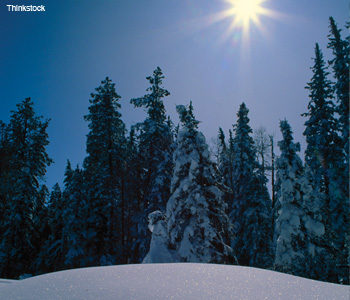Feature
All about Sparkles
Sparkles are a magnificent manifestation of optics in nature, and nowhere are they as abundant as on freshly fallen snow. Because they evade our depth-perception mechanism, sparkles have an otherworldly quality that makes them seem to float indeterminately rather than appearing on any surface or at any altitude.
 The ethereal quality of the sparkle stems largely from its appearing to float indeterminately, neither above nor below nor on the surface—where we “know” it to be.
The ethereal quality of the sparkle stems largely from its appearing to float indeterminately, neither above nor below nor on the surface—where we “know” it to be.
Whether they’re caused by snow, diamonds or glitter, sparkles are always dazzling to behold. The glittering, ephemeral effect they have is caused in part by their rapid appearance and disappearance. But that is not the whole story—or even most of it. The startling impression they induce is caused by the inability of our depth-perception mechanism to process them. Snow crystals have flat surfaces that act as tiny mirrors, reflecting the sun. Considering the mirror width negligible, the beamwidth of these reflections is equal to the angular diameter of the sun, 0.5°. The width of the illuminated spot at the eye is given by
…Log in or become a member to view the full text of this article.
This article may be available for purchase via the search at Optica Publishing Group.
Optica Members get the full text of Optics & Photonics News, plus a variety of other member benefits.
